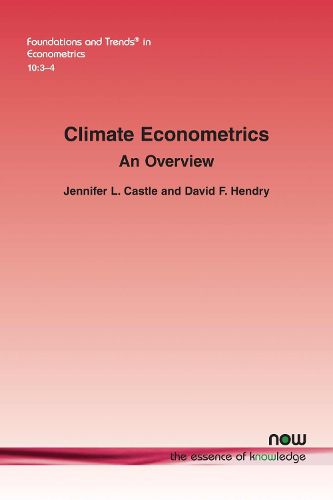Readings Newsletter
Become a Readings Member to make your shopping experience even easier.
Sign in or sign up for free!
You’re not far away from qualifying for FREE standard shipping within Australia
You’ve qualified for FREE standard shipping within Australia
The cart is loading…






This title is printed to order. This book may have been self-published. If so, we cannot guarantee the quality of the content. In the main most books will have gone through the editing process however some may not. We therefore suggest that you be aware of this before ordering this book. If in doubt check either the author or publisher’s details as we are unable to accept any returns unless they are faulty. Please contact us if you have any questions.
Climate Econometrics: An Overview provides a review of the research in this new and growing field. The structure of the monograph is as follows: First, section 2 describes econometric methods for empirical climate modeling that can account for wide-sense non-stationarity, namely both stochastic trends and location shifts, with possibly large outliers, as well as dynamics and non-linearities. Section 3 considers hazards confronting empirical modeling of nonstationary time-series data using an example where a counter-intuitive finding is hard to resolve. The framework has a clear subject-matter theory, so is not mere ‘data mining’, yet the empirical result flatly contradicts the well-based theory. Section 4 provides a brief excursion into climate science, mainly concerned with the composition of the Earth’s atmosphere and the role of CO2 as a greenhouse gas. Section 5 considers the consequences, both good and bad, of the Industrial Revolution raising living standards beyond the wildest dreams of those living in the 17th century, but leading to dangerous levels of CO2 emissions from using fossil fuels and consider applications of climate econometrics against that background. Section 6 illustrates the approach by modeling past climate variability over the Ice Ages. Section 7 models UK annual CO2 emissions over 1860-2017 to walk through the stages of modeling empirical time series that manifest all the problems of wide-sense non-stationarity. Section 8 concludes and summarizes a number of other empirical applications.
$9.00 standard shipping within Australia
FREE standard shipping within Australia for orders over $100.00
Express & International shipping calculated at checkout
This title is printed to order. This book may have been self-published. If so, we cannot guarantee the quality of the content. In the main most books will have gone through the editing process however some may not. We therefore suggest that you be aware of this before ordering this book. If in doubt check either the author or publisher’s details as we are unable to accept any returns unless they are faulty. Please contact us if you have any questions.
Climate Econometrics: An Overview provides a review of the research in this new and growing field. The structure of the monograph is as follows: First, section 2 describes econometric methods for empirical climate modeling that can account for wide-sense non-stationarity, namely both stochastic trends and location shifts, with possibly large outliers, as well as dynamics and non-linearities. Section 3 considers hazards confronting empirical modeling of nonstationary time-series data using an example where a counter-intuitive finding is hard to resolve. The framework has a clear subject-matter theory, so is not mere ‘data mining’, yet the empirical result flatly contradicts the well-based theory. Section 4 provides a brief excursion into climate science, mainly concerned with the composition of the Earth’s atmosphere and the role of CO2 as a greenhouse gas. Section 5 considers the consequences, both good and bad, of the Industrial Revolution raising living standards beyond the wildest dreams of those living in the 17th century, but leading to dangerous levels of CO2 emissions from using fossil fuels and consider applications of climate econometrics against that background. Section 6 illustrates the approach by modeling past climate variability over the Ice Ages. Section 7 models UK annual CO2 emissions over 1860-2017 to walk through the stages of modeling empirical time series that manifest all the problems of wide-sense non-stationarity. Section 8 concludes and summarizes a number of other empirical applications.